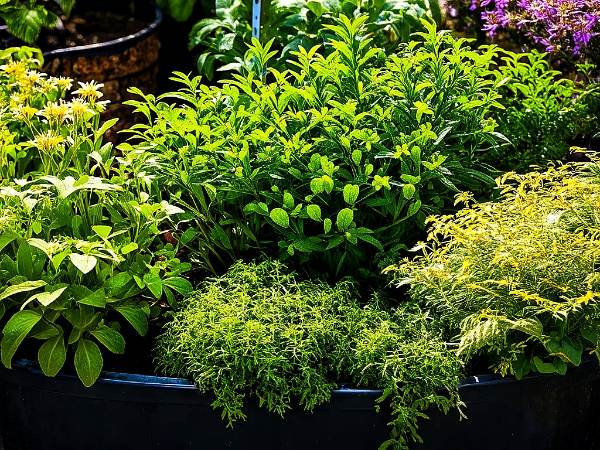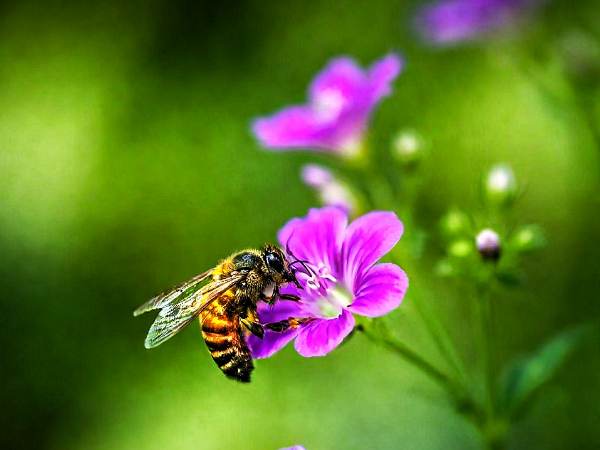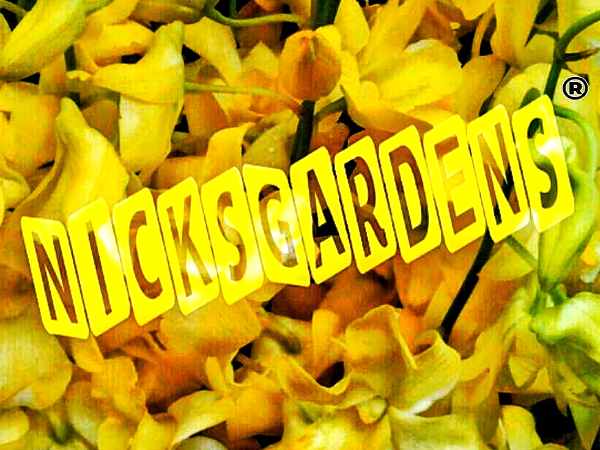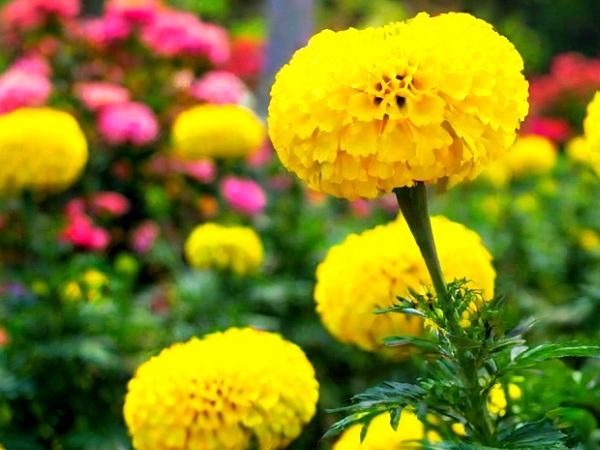🌱Nurturing Nature: The NicksGardens® Guide to Regenerative Gardening🌱
🌱Part 01🌱
The Regenerative Gardening Revolution🌱🌿
Introduction🌱🌿
Tired of battling pests, struggling with poor soil, and feeling disconnected from nature? Imagine a garden that heals the Earth while nourishing your body and soul. That’s the power of regenerative gardening.
When I first started dabbling in regenerative gardening, I was amazed by the transformation. My once lackluster patch of dirt became a vibrant ecosystem teeming with life. The soil grew richer, the plants flourished, and I felt a renewed sense of connection to the natural world. It was truly a revelation.
Regenerative gardening is a revolutionary approach that’s changing the way we think about growing food and nurturing our landscapes. It’s about working with nature, not against it, to create a garden that’s not only beautiful and productive but also sustainable and resilient.
In this beginner’s guide, we’ll uncover the secrets of regenerative gardening, explore its key principles, and discover how you can easily implement these practices to transform your own backyard oasis into a thriving ecosystem. We’ll also delve into the history of victory gardens and how their principles align with regenerative practices. Get ready to embark on a journey towards a healthier planet and a more fulfilling gardening experience.

What is Regenerative Gardening?🌱🌿
Regenerative gardening is a holistic approach that focuses on improving soil health, biodiversity, and ecosystem function to create a sustainable and thriving garden. [1] It’s a way of gardening that goes beyond simply growing plants; it’s about nurturing the entire ecosystem to create a healthy, balanced environment where everything thrives.
Key Principles of Regenerative Gardening:🌱🌿
1.Minimal Soil Disturbance:
Imagine your soil as a bustling city, with intricate networks of tunnels, highways, and neighborhoods inhabited by countless microorganisms. Tilling the soil is like bulldozing that city, disrupting the delicate infrastructure and displacing its residents. Regenerative gardening embraces the “no-dig” philosophy, leaving the soil undisturbed so those beneficial microbes can thrive. [2] Instead of tilling, we use techniques like lasagna gardening or sheet mulching to build layers of organic matter on top of the soil. This not only protects the soil structure but also feeds the microorganisms and helps retain moisture.
2.Feeding the Soil:
Just like we need a balanced diet to stay healthy, so does our soil. In regenerative gardening, we focus on feeding the soil with nutrient-rich organic matter, such as compost, cover crops, and natural fertilizers. This not only provides essential nutrients for plant growth but also improves soil structure, water-holding capacity, and overall fertility. [3] Think of it as a gourmet feast for your soil’s microbiome !
3.Nurturing Biodiversity:
A regenerative garden is a welcoming home for a diverse cast of characters, from buzzing bees and fluttering butterflies to hardworking earthworms and beneficial fungi. By planting a variety of flowers, herbs, and vegetables, we create a vibrant habitat that attracts and supports a wide range of life. This biodiversity not only adds beauty to our gardens but also plays a crucial role in pollination, pest control, and overall ecosystem health. [4]

4.Working with Natural Cycles:
Regenerative gardening is about working in harmony with nature’s rhythms and cycles. Instead of fighting against the elements, we learn to harness their power. We conserve water by collecting rainwater, mulching our beds, and choosing drought-tolerant plants. [5] We embrace the natural process of decomposition by composting our kitchen scraps and yard waste. And we work with the seasons, planting crops that thrive in our local climate and conditions.
How Regenerative Gardening Differs from Conventional Gardening🌱🌿
Unlike conventional gardening, which often relies on chemical fertilizers and pesticides, regenerative gardening focuses on building healthy soil and fostering a diverse ecosystem. This not only leads to healthier plants and more nutritious food but also helps to conserve water, protect biodiversity, and mitigate climate change. [14]
Regenerative gardening is a long-term investment in the health of your soil and the planet. It’s a way to create a garden that not only provides you with fresh, nutritious food but also contributes to a more sustainable and resilient future.
Why Choose Regenerative Gardening?🌱🌿
Regenerative gardening is a win-win for both the environment and the gardener. It’s a way to create a thriving garden that not only provides you with fresh, nutritious food but also contributes to a healthier planet. Let’s take a closer look at some of the key benefits:
Environmental Benefits🌱🌿
1. Mitigating Climate Change:
- Did you know that the soil beneath our feet has the incredible potential to store vast amounts of carbon, helping to combat climate change? [6] Regenerative gardening practices, such as composting and using cover crops, enhance soil health and increase its ability to sequester carbon, drawing it down from the atmosphere where it contributes to global warming. By embracing regenerative gardening, you become a climate champion, actively participating in the fight against climate change.
- In this article series we’ll discovery and learn about how to transform your garden into a carbon sink, helping to mitigate the effects of climate change one plant at a time. We’ll explore how practices like minimizing soil disturbance, adding organic matter, and planting deep-rooted perennials can increase the amount of carbon stored in your soil.
2. Conserving Water:
- In a world facing increasing water scarcity, regenerative gardening offers a sustainable solution. By implementing techniques like rainwater harvesting, mulching, and using drought-tolerant plants, you can significantly reduce your garden’s water consumption. [15] Mulch acts as a protective blanket, shielding the soil from the sun’s rays and reducing evaporation. Drought-tolerant plants, like succulents and native species, have adapted to thrive with minimal water, making them ideal for regenerative gardens.
- In this article series we’ll learn how to create a water-wise garden that thrives even in dry spells. We’ll delve into practical tips like using drip irrigation, grouping plants with similar water needs, and choosing the right plants for your climate.
3. Protecting Biodiversity:
- Imagine your garden as a bustling metropolis, teeming with a diverse array of life. Regenerative gardening embraces this biodiversity, creating a welcoming habitat for pollinators, beneficial insects, and other wildlife. [16] By planting a variety of flowering plants, providing water sources, and avoiding harmful pesticides, you can transform your garden into a sanctuary for these essential creatures. Pollinators, like bees and butterflies, play a vital role in plant reproduction, while beneficial insects, like ladybugs and lacewings, help control pests naturally.
- In this article series we’ll learn how to create a haven for biodiversity in your own backyard. We’ll explore which plants attract pollinators, how to create nesting sites for beneficial insects, and how to build a balanced ecosystem where all creatures can thrive.
4. Reducing Pollution:
- Conventional gardening often relies on synthetic fertilizers and pesticides, which can leach into waterways and pollute our environment. Regenerative gardening, on the other hand, prioritizes natural solutions. By using compost and organic fertilizers, you nourish your plants without harming the soil or surrounding ecosystems. [17] This not only protects water quality but also ensures that the food you grow is free from harmful chemicals.
- In this article series we’ll learn the power of natural fertilizers and pest control methods. We’ll explore how to make your own compost, brew nutrient-rich compost tea, and identify natural predators that can help keep pests in check.
5. Connect to Victory Gardens:
- The concept of regenerative gardening shares a deep connection with the victory garden movement that emerged during World War I and II. Victory gardens were planted by individuals and communities to supplement food supplies and boost morale during times of hardship. [18] These gardens emphasized self-sufficiency, resourcefulness, and sustainable practices, much like regenerative gardening today. By embracing regenerative gardening, you are not only creating a healthier environment but also tapping into a rich history of resilience and community empowerment.
- In this article series we’ll learn the inspiring legacy of victory gardens and how their principles continue to guide us towards a more sustainable and self-sufficient future.
Personal Benefits🌱🌿
1. Healthier Food, Healthier You:
Imagine biting into a sun-ripened tomato, bursting with flavor and overflowing with nutrients. Regenerative gardening empowers you to grow your own food, free from harmful chemicals and packed with vitamins, minerals, and antioxidants. [19] By nurturing the soil and creating a thriving ecosystem, you cultivate produce that’s not only delicious but also deeply nourishing for your body and mind.
2. A Garden That Pays You Back:
Who doesn’t love saving money? Regenerative gardening can be surprisingly budget-friendly. By composting kitchen scraps and yard waste, you create your own free, nutrient-rich fertilizer. [20] By attracting beneficial insects and fostering a balanced ecosystem, you reduce the need for costly pesticides and herbicides. Imagine the satisfaction of harvesting a bountiful crop knowing you’ve done it all while saving money and protecting the environment.
3. Cultivating Wellness in Your Backyard:
Gardening has long been celebrated for its therapeutic benefits. Spending time in nature, digging in the soil, and nurturing plants can work wonders for your mental and physical health. [21] The gentle exercise involved in gardening can help to improve cardiovascular health, strengthen muscles, and boost your mood. The exposure to sunlight provides a natural dose of vitamin D, which is essential for bone health and immune function. But regenerative gardening goes beyond the physical benefits. It provides a sense of purpose, connection to nature, and satisfaction from nurturing life.
4. A Sanctuary for the Soul:
In our fast-paced, technology-driven lives, it’s easy to feel overwhelmed and disconnected. Regenerative gardening offers a sanctuary where you can escape the hustle and bustle and reconnect with the natural world. [22] The simple act of tending to your garden can be a form of meditation, allowing you to slow down, breathe deeply, and appreciate the beauty that surrounds you. It’s a chance to witness the miracle of life unfolding before your eyes and to find solace in the rhythm of the seasons.
Imagine stepping into your garden and feeling a sense of tranquility wash over you. The vibrant colors of the flowers, the gentle hum of the bees, and the earthy scent of the soil all combine to create a multi-sensory experience that rejuvenates your spirit. Whether you’re harvesting ripe tomatoes, watching butterflies flit among the blossoms, or simply sitting in quiet contemplation, your regenerative garden becomes a haven for your soul.
5. Empowerment Through Self-Sufficiency:
Regenerative gardening empowers you to take control of your food supply and reduce your reliance on external sources. By growing your own food, you know exactly where it comes from and how it was grown. This not only ensures that you’re consuming fresh, healthy produce but also fosters a sense of self-reliance and resilience. In times of uncertainty, having a thriving garden can provide peace of mind and a sense of security.
Imagine the satisfaction of harvesting your own salad greens, plucking ripe tomatoes from the vine, or enjoying a homegrown meal made with ingredients you nurtured from seed. Regenerative gardening gives you the power to not only feed yourself and your family but also to connect with the source of your food and the cycles of nature.

Part 03 Next Week🌱🌿
🌱✨your personal paradise 🌱✨
Close your eyes for a moment and imagine… Picture a symphony of colors as blossoms dance in the sun, their petals whispering secrets of the earth’s embrace. Breathe deep the intoxicating freshness of herbs, a melody of scents that soothes your soul and awakens your spirit. Feel the warmth of the sun on your skin and the earth’s energy pulse through your fingertips as you tend to your plants,
Feel the stress melt away as you relish the pure joy of harvesting your own homegrown bounty..
This is your personal paradise, where every bloom, every leaf, and every harvest brings you closer to nature’s magic. 🌱✨
🌱🌱 UNLEASH YOUR INNER BOTANIST:🌱✨
Discover fascinating facts and expert tips that will deepen your connection with the plant world. 🌱✨🌱✨
🌿 Your Q&A ask nick: [LINK]🌱✨
🌱🌱 EXPLORE THE ART OF SUSTAINABLE GARDENING: 🌱✨
Learn how to nurture your plants while minimizing your impact on the environment. ✨🌱✨
🌿 ASK AN EXPERT: [LINK]✨
🌿 NicksGardens® Garden Makeover : [LINK]🌱
🌱 🌱 Ready to welcome the magic of nature into your home with a burst of color, freshness and life?” 🌱✨
🌱🌱YOUR GARDEN ADVENTURE BEGINS NOW:🌱✨
Let NicksGardens® be your trusted guide as you embark on this exciting journey of growth and discovery. 🌱✨

